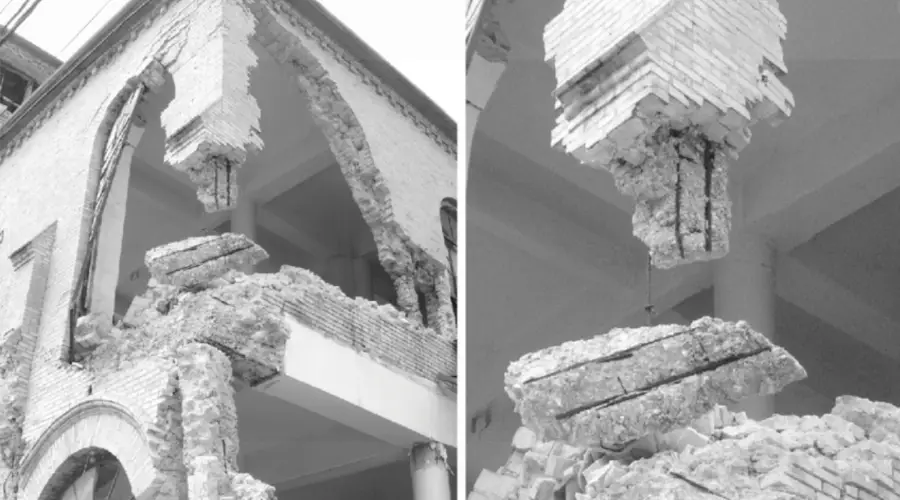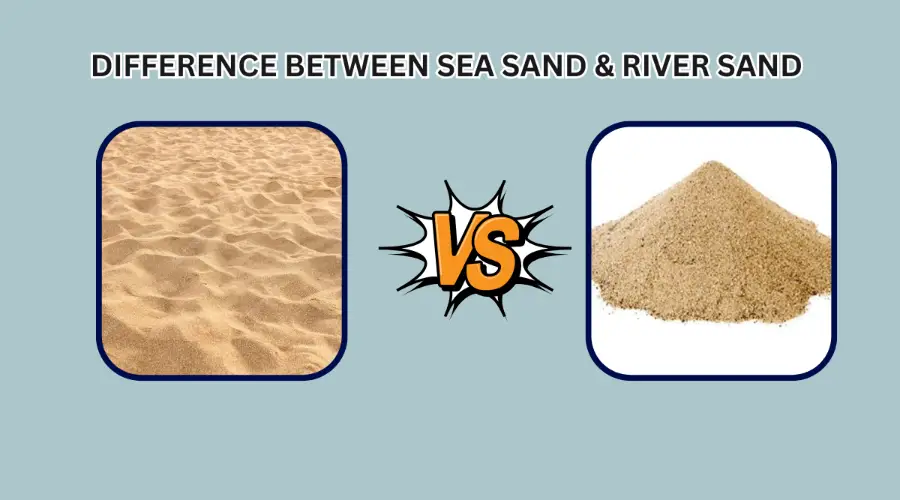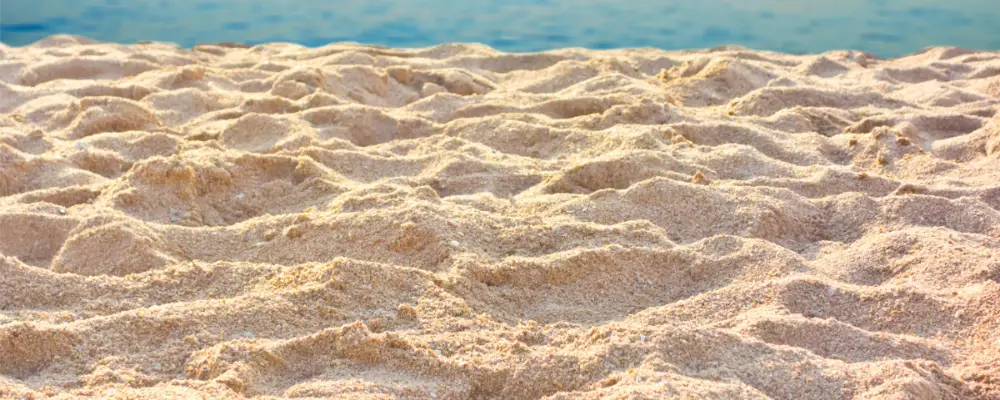The choice of materials plays a major role in deciding the quality of the structure, especially the fine aggregates used in the concrete mix. Over the years, river sand has been the primary choice for fine aggregates, whereas sea sand has not even been considered for construction work. So why is sea sand not used in construction? Here is a detailed view of why sea sand cannot be used in construction and its consequences.
Top 6 Reasons Why Sea Sand Cannot be Used for Construction
1. Presence of Salt & Contaminants
Sea sand consists of a large amount of salt and dirt particles due to its proximity to seawater and other external factors, making it difficult to remove them, which consumes a lot of time.
2. Corrosion of Steel and Iron Reinforcement

The chloride content in sea sand can lead to the corrosion of steel and iron, which leads to a reduced carrying capacity of steel and iron. This could lead to poor stability and sustainability of the structure.
3. Reduced Compressive and Tensile Strength
Sea sand doesn’t possess the necessary compressive or tensile strength for construction activities compared to river sand and other fine aggregates used in construction.
4. Deterioration of Plastered and Slab Furnaces
The excess salt content in the sea sand will deteriorate the plastered surface and slab surface in the long run, causing seepage (water leakage) in the building.
5. Moisture Absorption and Dampness
The salt content in sea sand absorbs the moisture from the atmosphere and causes dampness on the structure’s surface.
6. Poor Workability and Rearrangement Resistance
Sea sand tends to have a narrow range of finer particles with a smooth and rounded surface due to the natural weathering and erosion processes. This offers weaker resistance to rearrangement than angular and elongated particles with rough surfaces, like river sand.
Preparation & Treatment of Sea Sand for Construction
Washing & Purification
The sea sand can be rinsed and washed with fresh water to remove excess salt and impurities. After cleaning the sand, the sand can be filtered using a sieve to remove organic matter and debris and prevent any issues in the concrete structure.
Testing Suitability
The sand can be tested for salt content to ensure whether the chosen sand is within the applicable construction standards for concrete use. Strength and durability tests should also be made by mixing a sample of concrete with sea sand.
Blending with other materials
Sea sands can be mixed with river sand to balance the salt content. Chemical admixtures can also help reduce the effects of salt content and enhance the performance of the concrete.
Regulatory Standards and Guidelines for Using Sea Sand
Regulations for using sea sand in construction are important to ensure safety and durability. These rules set limits on salt content, usually between 0.5% and 1.0%, to prevent damage like rusting in concrete. Sea sand must be thoroughly washed to remove salts and impurities and then tested for its chemical and physical properties before use. Tests often check for strength, durability, and moisture absorption. Following these guidelines ensures sea sand is used safely, protecting the strength and quality of structures.
Alternative uses of Sea Sand
As sea sand in construction could cause structural problems, it can be used for non-structural applications. Sea Sands can be used in:
- Coastal landscaping projects and decorative features.
- It can be used in beach nourishment projects to replace eroded beaches.
- Sea sands can be mixed with specialised concrete mixes and used for marine environments, which may benefit their natural properties.
- Sea sand can be used for artistic and decorative concrete to provide unique texture & appearance.
Difference between Sea Sand & River Sand

| Sea Sand | River Sand |
| Sea Sand has smooth, rounded surfaces that offer less resistance. | River sand is fine, and angular surfaces provide good resistance. |
| It contains high salt content and impurities. | It contains less salt content and natural minerals. |
| Sea sand is impure and contaminated due to deposits. | River sand is generally cleaner and may contain organic matter and debris. |
| It provides poor compressive & tensile strength when mixed in concrete. | It provides good compressive & tensile strength suitable for construction. |
| Sea sand is highly prone to moisture and efflorescence. | Mixed with the right concrete mix, river sand gives good resistance to moisture & efflorescence. |
Conclusion
Sea sand is available in abundant quantities along the coastal areas. However, there are more challenges in using sea sand in construction. The salt content, minerals, debris and other organic materials in the sea sand play a major role in hindering the functioning of sea sand in construction works. Although appropriate treatments and processes can mitigate these issues, these processes consume more time, money, and energy, making river sand, M-sand and other fine aggregates better alternatives
FAQs
The sulfate and chloride in sea sand cause deterioration in concrete and corrosion of steel.
River sand and M-sand are predominantly used in construction due to their consistency, quality and minimal impurities.

